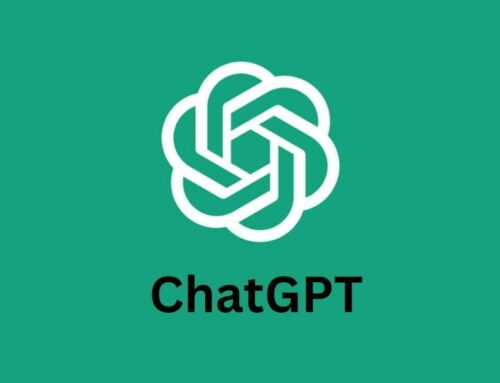
As artificial intelligence (AI) tools like ChatGPT continue to transform the business landscape, small business owners are uniquely positioned to leverage these tools for growth and efficiency. Whether it’s generating social media content, crafting customer emails, or streamlining operations, the key to unlocking the full potential of AI lies in how effectively you communicate your needs to it. A well-constructed prompt ensures you get accurate and actionable outputs. This article presents a comprehensive prompt framework, breaking it into five essential components: role, instruction, context, examples, and clarifying questions.
1. Role: Define the Perspective or Expertise Required
The role specifies the perspective or expertise you want ChatGPT to adopt. By clearly defining the role, you ensure that the AI’s response is tailored to the required viewpoint, increasing its relevance and accuracy. For example, a poorly defined role might result in generic outputs that fail to address the specific nuances of the task. This ensures the output aligns with the specific viewpoint or knowledge base required for the task.
What to Include in the Role
- Specific Expertise: Identify the role ChatGPT should assume, such as “marketing expert,” “customer service representative,” or “financial analyst.”
- Relevance to Task: Ensure the role aligns with the nature of the task or the type of response you need.
Role Examples
- “Act as a marketing expert to craft a compelling product description.”
- “Assume the role of a customer support agent to address a client’s concerns.”
- “Provide insights as a financial consultant on optimising our monthly budget.”
Defining the role provides ChatGPT with the appropriate lens to approach the task.
2. Instruction: Define the Task Clearly
The instruction is the first and most crucial part of any prompt. It sets the stage by clearly defining what you want the AI to do. A vague or overly broad instruction may lead to irrelevant or subpar results. The goal here is to be specific, concise, and action-oriented.
What to Include in Instructions
- Action Verb: Start with a clear directive such as “Write,” “Create,” “Summarise,” “Explain,” or “Analyse.” These verbs guide ChatGPT on the type of output you expect.
- Desired Format: Specify how you want the response presented, whether in bullet points, paragraphs, a table, or a specific style like formal, casual, or persuasive.
- Outcome Expectation: Indicate the purpose of the task, such as “Generate a professional email for a supplier” or “Create an engaging Instagram caption.”
Instruction Examples
- “Write a promotional email to announce our summer sale.”
- “Create a step-by-step guide on how to use our new app.”
- “Summarise the key points from this business report in bullet form.”
Clear instructions ensure the AI understands the task and delivers relevant and actionable content.
3. Context: Provide Background Information
Context is the second component of the prompt framework. Without adequate context, ChatGPT might produce responses that are misaligned with your goals or fail to resonate with your target audience. For instance, insufficient background information could lead to overly general or irrelevant content. It gives ChatGPT the necessary background to tailor its response to your business’s needs. The more specific and relevant the context, the better the output will align with your goals.
What to Include in Context
- Business Details: Describe your business, including its name, industry, and unique selling points (USPs).
- Target Audience: Share details about your intended audience, such as their demographics, preferences, or pain points.
- Tone of Voice: Specify the tone or style that reflects your brand, whether it’s formal, playful, authoritative, or conversational.
- Current Situation: Provide relevant situational details, such as upcoming events, promotions, or challenges you’re facing.
Context Examples
- “We are a family-owned coffee shop specialising in organic, fair-trade beans. Our audience is primarily young professionals aged 25-40 who value sustainability and quality.”
- “Our upcoming webinar targets small business owners interested in digital marketing strategies. The tone should be approachable and informative.”
- “We’re launching a new vegan protein bar. The campaign should emphasise its high protein content and great taste.”
Providing detailed context ensures ChatGPT’s response aligns with your brand and resonates with your audience.
4. Examples: Guide the Output with Reference Points
Examples are a powerful way to set expectations for the type of response you want. Ideally, providing two to three examples ensures that ChatGPT has sufficient guidance while maintaining flexibility to adapt to the task’s specific requirements. They act as a reference point for ChatGPT, showing it what kind of content, structure, or tone to emulate. This is especially useful when you have specific preferences or want to maintain consistency in your communications.
What to Include in Examples
- Sample Outputs: Provide one or more examples of similar content you’ve used before, such as past social media posts, emails, or marketing materials.
- Preferred Style or Format: Highlight aspects of the example that you want ChatGPT to replicate, such as tone, structure, or key messaging.
- Reference Documents: Point to existing templates, guidelines, or documents that can inform ChatGPT’s response.
Example Scenarios
- “Here’s an example of a previous email: ‘Subject: A Special Offer Just for You! Body: Enjoy 15% off your next purchase. Shop now and save!’ Please use a similar tone and structure.”
- “Refer to the attached social media calendar for topics we’ve covered before. Create a post on our upcoming product launch in a similar style.”
Providing examples ensures the AI generates outputs that align with your expectations and brand identity.
5. Questions to Clarify Output
The final component of the framework is a set of questions to clarify and refine the output. Prioritising these questions based on the most critical aspects of the task ensures that feedback is focused and actionable, streamlining the revision process. These questions serve as a feedback loop, helping you assess whether ChatGPT’s response meets your needs and providing a basis for further refinement.
What to Include in Clarifying Questions
- Tone and Style: Ask whether the tone or style matches your brand’s voice.
- Content Relevance: Confirm whether the response includes all the necessary details or addresses the main points.
- Suggestions for Improvement: Seek feedback on specific aspects, such as clarity, persuasiveness, or engagement level.
Example Questions
- “Does this tone align with our brand voice?”
- “Would you like more emphasis on benefits or features?”
- “Should we include a call-to-action, such as ‘Visit our website’ or ‘Sign up today’?”
- “Is the length of this email appropriate, or should it be shorter?”
By asking clarifying questions, you ensure the output is fine-tuned to your needs and expectations.
Putting It All Together: A Complete Example
Let’s see how this framework works in practice with a real-world example:
Quick Tips
👉 Press Shift Enter to start a new line in the prompt box.
💡 In a prompt, a # typically serves as a delimiter or marker to indicate different sections, roles, or instructions.
Why This Framework Works
When using ChatGPT, the final prompt might look something like this:
This prompt framework ensures that every interaction with ChatGPT is structured, efficient, and aligned with your business goals. By reducing ambiguity, it also saves time and minimises the need for multiple iterations, ultimately leading to cost savings and more effective use of AI in your business. By:
- Defining the perspective (Role),
- Clearly defining the task (Instruction),
- Providing relevant background information (Context),
- Offering reference points (Examples), and
- Asking follow-up questions (Clarifying Questions),
you empower ChatGPT to deliver responses that are accurate, actionable, and tailored to your business’s unique needs.
Final Thoughts
For small business owners, ChatGPT can be a game-changer—but only if you know how to communicate your needs effectively. This prompt framework offers a simple yet powerful way to ensure that AI-generated outputs align with your vision and goals. By mastering this approach, you can save time, enhance productivity, and drive your business forward with confidence. Start using this framework today and unlock the full potential of AI in your small business.





